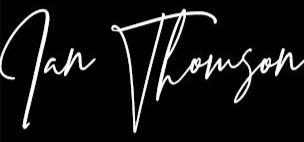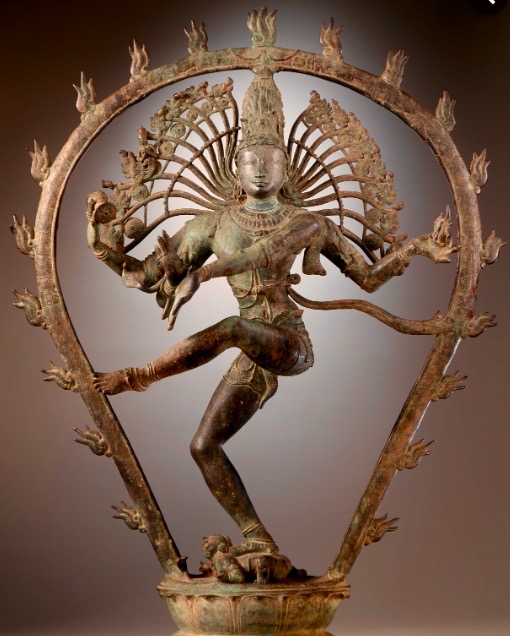
17 Oct Art Theology and Symbolism
Art, Theology and Symbolism
Christianity
“Whatsoever is …beautiful…(and pure)…think on these things”
Bible
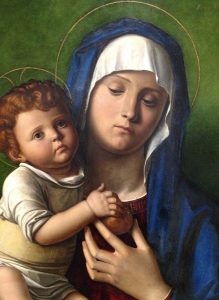
Hinduism
“I am the beauty of the beautiful…”
Baghvad Gita
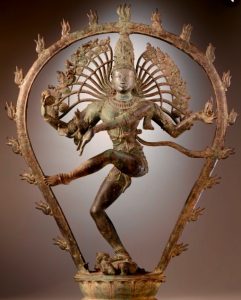
Islam
‘He created the heavens and earth with Truth, formed you and made your forms beautiful…’
Quran (64:3)
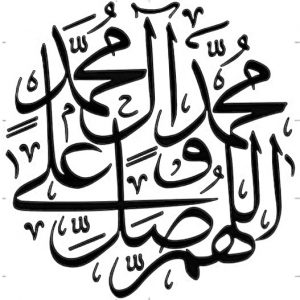
(But certain forms of Islam eschew figurative representation and use abstract patterns and gorgeous calligraphy to point to Him.)
Buddhism,
Beauty is an intrinsic quality of all things, not a subjective attribute restricted to a few. Seeing beauty subjectively values some beings or things over others, judging some to be more beautiful.
Beauty, the Buddha taught, should not become the basis for individual likes or dislikes as this leads to attachment—rather, we find joy in the beauty around us without attaching external value to it.
Buddhism recognizes that all beings are part of a whole, and the whole is beautiful. Beauty is without any specific form, and in effect could be called formless, yet it also serves as a unifying force. Because all beings are interconnected, all beings have intrinsic beauty.
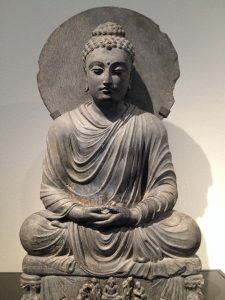
What I Believe
Premise: God is good.
Premise: All that is good is God. (Intrinsically good as opposed to “good for…”)
Syllogisms:
If all that is good is God; and if love is good, then love is God.
If all that is good is God; and if the sun is good, then the sun is God.
If all that is good is God; and if nature is good then nature is God.
Of course there are those that would say that the sun and nature are morally neutral ie. not intrinsically good and that the same could even be said of love on the basis that the root of love is selfish because we wish to feel love because it is a pleasurable sensation.
However, this argument would then easily degenerate into a nihilistic denial of everything since if nothing is good, it is morally permissible to kill, steal, lie etc. We then have to ask is nihilism useful to humanity? To which the answer as far as I can ascertain must be no. Which would make us go back to the statement (Aristotle’s, I think): The Good is that which we pursue for its own sake. Ergo love is good. Also of course, other things such as art, science, knowledge, etc.
The sun gives life to all things therefore the sun is good.
Since nature is beautiful, and sustains and is all life, it is good.
The mountain is God. The sea is God. The tiger is God. The horse is God. The goose is God. The hedgehog is God. The spider is God.
This is not Pantheism. Just because a spider is God does not mean we worship it or pray to it. In a similar way a Christian who thinks God is in a church, would not pray to a brick that is part of its structure.
God is all things and all things are God. For the atheist who has looked into the nature of matter, replace the word “God” with “energy” or better, “intelligence”. (Cf also: “reason” or “logos”)
If we are part of nature and if nature is God.
We are God.
In what sense can this be true?
If we are made in God’s image and if God is spirit,
then we are God in our spiritual characteristics.
We also are God in our physical characteristics in two ways. Firstly in our very material nature. God is what makes us tick. Secondly in our beauty All people are physically beautiful. Indeed all things are beautiful, you just need eyes to see.
Beauty is God, and all things are beautiful. This brings us back to that all things are God via a different route: that of visual perception.
Visual perception is the foundation of visual art. Art is a language and with it we talk of God. Physical characteristics reflect spiritual ones. For example, erect posture reflects nobility, open arms indicate inclusiveness, smiles reflect love, etc.
We can therefore, portray a reflection of The Divine in our art.
If we combine the best characteristics from nature into one sculpture we concentrate the reflection of The Divine in it. This is a development of the Socratic idea whereby because a perfect human does not exist, the sculptor combines perfect physical elements from various humans into one sculpture to create a sculpture of a perfect human to symbolise a deity.
Symbolism
Symbolism exists not only in figurative art but also in abstract art. The spiral, for example, is found in nature from galaxies to fern fronds. Since very ancient times it has been used as a symbol, laden with meaning. Some of its general symbolism includes: balance, progress, initiation, centering, expansion, awareness, change, mystery, femininity. More esoteric symbolism includes: holistic growth, letting go or surrender, awareness of the one within the whole, connectivity with The Divine, cosmic revolutions and spirit. It is associated with geometrical and philosophical concepts such as the Fibonacci series and the golden mean which are considered to be indicators of the universal nature of beauty in proportions.
My Work
By simplifying it and opening it out to make it a very gentle spiral, in my abstract work I use the form to create sculptures to convey a feeling of peace and calm. By cantilevering elements of the sculpture and by having them offset, leaning or asymmetrical, I create more movement. The pieces are usually finished to an egg shell or frosted glass level of polish. Any more and the resulting shine would begin to distract from the purity of the form. Any less and the tool marks would be visible.
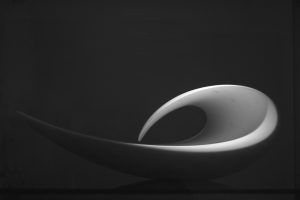
Thematic development is partly linear in the sense that I may use ideas from my last piece in the next one, and partly eclectic in that ideas sometimes come from other areas of interest such as reading, philosophy and theology, or from random events in everyday life.
With sculpture I am using a language without words, and I’m trying to say something like: “Look at all this beauty around us. Dwell on it. The world is a wonderful place!”.
But of course the Beauty itself cannot be put into words it is nameless and formless. And sometimes we shouldn’t represent it directly but just point to it.

